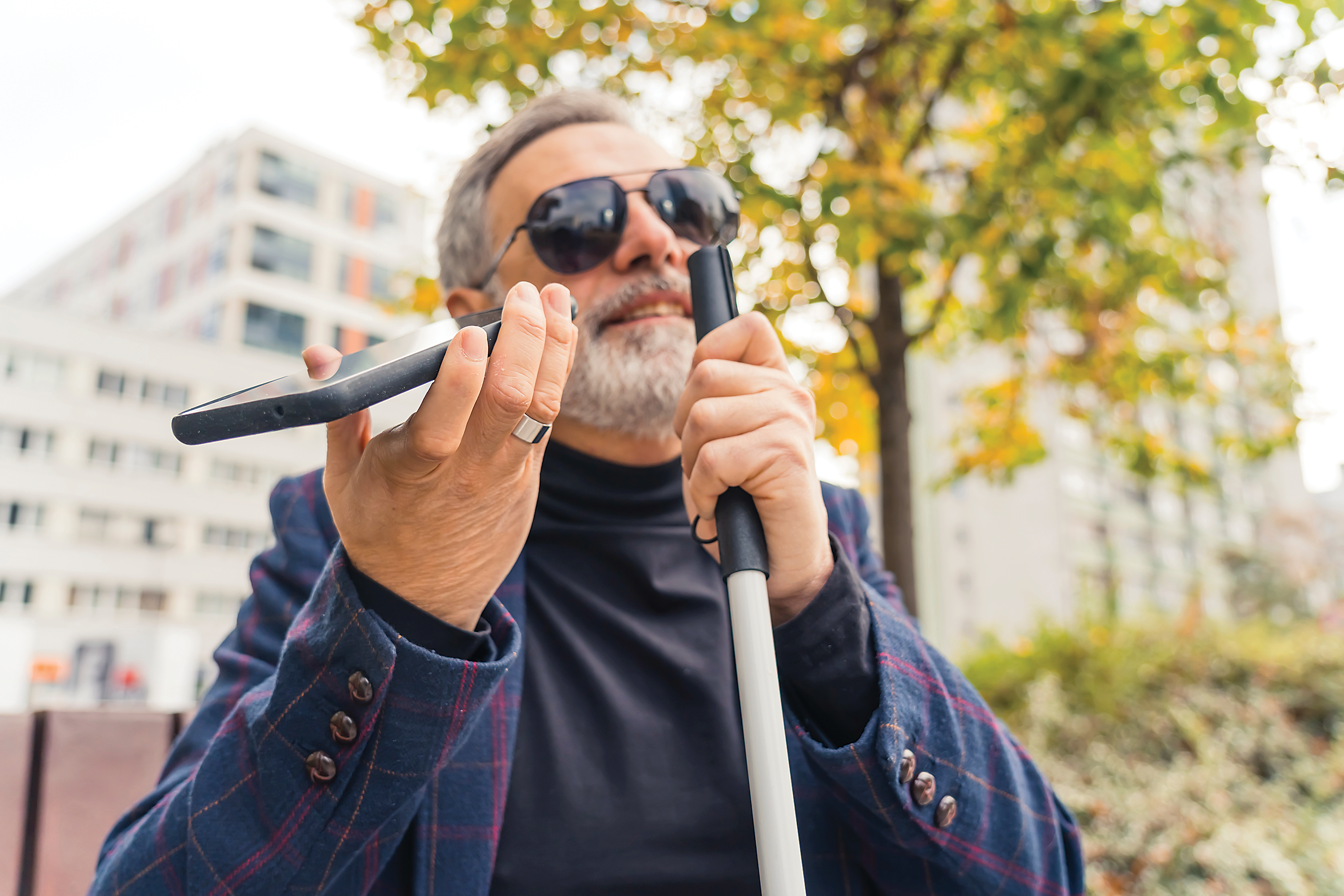
By Bob Sandrick
Artificial intelligence and advanced technology can be life-changing for people with disabilities.
“There are myths out there that people with disabilities cannot use technology and are not interested in using technology, and that’s the opposite of what’s true,” says Steve Pelton, executive director of We Thrive Together, an Eastlake-based nonprofit that hosts online social events. “Actually, people with disabilities use technology more than the general public to help them with mobility and daily needs.”
We Thrive Together is among a host of organizations, nonprofits and government agencies that help people with special needs gain access to AI and tech tools, teach them how to use those tools, and even help find ways to cover the costs.
“Getting up to date on AI literacy is critical,” says Stacy Springer, program director for the Assistive Technology & Accessible Educational Material Center at OCALI, a Columbus-based organization. “AI is extremely exciting, but at the same (time) fear-producing. It can and will be a game changer for people with disabilities and in education.
“AI won’t replace teachers and therapists,” Springer says. “Human expertise is still needed to determine where we go and how fast. AI is a tool.”
Some new technologies have been adapted to support people with disabilities. For example, smartphone apps like Google Lens snap photos and audibly describe the pictures, allowing the blind to experience what’s in front of them.
“That in itself is cool,” says Adrian Bien, assistive technology specialist at Cleveland Sight Center in Cleveland. “But what’s really cool is you can ask follow-up questions — like if you’re sitting on a park bench, you can ask the app to provide details of what’s in the scene.”
There are a variety of assistive technology devices and apps that provide opportunities to help people with special needs live their best lives. See below for options to try:
Ray-Ban Meta — eyeglasses with cameras, speakers and a microphone — achieves the same, just hands-free. Debbie Kogler, president and owner of Magnifiers & More, a Mentor supplier of equipment for the visually impaired, says people who have dyslexia can also benefit from her products. “We have filters, different tinted lenses, for people with dyslexia because certain color combinations can help them read better and help their brains interpret what certain numbers and letters are,” Kogler says.
Smart canes — made by WeWALK, a startup company — that alert blind walkers to obstacles and direct them to wherever they want to go through an audible voice.
• OKO, a free phone app that reads pedestrian traffic signals, letting users know when it’s safe to cross the street.
- Be My Eyes, another free app, helps the blind or visually impaired navigate through their homes.
- VoiceOver and TalkBack, free apps that allow the visually impaired to operate smartphones through swipes and taps.
Mobility, Safety and Education
For people with limited mobility, smart wheelchairs with sensors audibly tell users how to maneuver better through their homes. Voice-assistance systems allow them to control their home environment — like adjusting the thermostat, for example — and Ring doorbells can provide security by showing who’s at the front door.
Pelton says flashing and vibrating alarm clocks are available for people who are deaf. There also are visual-alert signals that let those with hearing loss know when the doorbell or phone is ringing.
Agencies like TruCare Provider Services, located in Cincinnati, interact with residents with special needs through smartphones or laptops to ensure they are safe in their homes. TruCare staff remind clients to take their medications and can even help with cooking.
“We provide outdoor cameras for security, with our remote staff monitoring the cameras,” says Bobby Fuller, remote support director at TruCare.
A technology called Beautiful.ai can help people with special needs create slideshows, and Synthesia allows people with physical limitations to create online avatars, which in turn conduct presentations.
Springer says that for students with autism, AI can summarize text, break down main points and even translate the text into different languages. Personalized AI tutors, which can ask and answer questions, also are on the market.
“Children with autism sometimes can relate to technology more than an adult teacher,” Springer says.
Helping with Resources
At Cleveland Sight Center, tech specialists like Bien evaluate clients to determine their needs, then draft individualized training plans at no cost. The technology isn’t free, but funding often is available through Opportunities for Ohioans with Disabilities, (ood.ohio.go) a state agency.
Kogler says medical insurance doesn’t cover most items at Magnifiers & More, but nonprofits like Catholic Charities and Easter Seals can help with the financing.
We Thrive Together
(wethrivetogether.org) spreads the AI-tech information by running the state of Ohio’s Tech Ambassador Network, consisting of 16 people who give in-person and virtual presentations about how tech has improved their lives.
“As the ambassadors have done that, it has opened up conversations with guardians, families and support providers about ways to help individuals achieve their goals using technology,” Pelton says.
Also, look to Assistive Technology of Ohio (atohio.org) that has a lending library, which has a variety of devices to offer from daily living aids, toys, speech communication and computers. The Arc of Ohio (thearcofohio.org) connects people with assistive technology services such as communication, home safety and sensory items.

